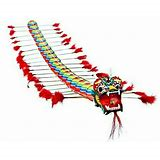The power density of a local wind-field volume is not constant.
I see an arch like Mothra as a huge kite with two anchors, not a kite network as such, even if several kites make it up. Its shape is continuous and unified, unlike kite stacks or some other kite networks.
True, but you pointed its inefficiency on Low radius loop - #30 by kitefreak , so that contradicts a bit the following sentence
A bigger kite can be used. Current wind turbines scale without making network, why would it be different with AWES? I think “network” is a buzzword because it refers to the internet, no more.
It is true. Force and power are not the same. Your definition of a “static” kite as a power device is not correct.
Mothra was designed as a network of tarp kites (metakite of kixels), that were themselves carefully first developed in single-kite form.
“Static kite” is merely a term of art for a kite relative to a reference location (like Earth). Everything is moving and energetic in physics.
The mistake is to think kite networks have to tangle and have no power compared to single kites.
I could be misguided here but you mentioned that tether length needs to increase with span and so ground area is proportional to tether length. I guess I would dispute that ground area in an array has to be proportional to tether length; but I think I am just speculating on operational subtleties which cannot be proved one way or the other at this stage. I think when you factor wind sheer and operational height relative to tether length in a cross wind system then you would get added benefits from longer tether lengths up to a point, I do appreciate that its a lot more complicated when we consider airborne mass and tether drag scaling also. Also I do not fully understand why tether length has to be directly proportional to wing span, excuse my ignorance. I was speculating sorry.
I am only referring to cross wind systems here.
Untrue. Mothra >50m WS, tethers are ~10m ea. Lattice waves are supported within this ratio.
I agree or I could agree, all other things being equal, such like the power process (figure-eight, loop…). That can also become another (or even the same) mean to define the power/space ratio.
I have a 7 m span kite with two lines of 30 m. I barely have enough room to make eight figures. If I extrapolate with 1 km lines, I get a 233 m kite.
Now if the power figure is a Low radius loop I can then use a larger kite, perhaps 12 m wingspan, then leading to a 400 m kite with 1 km lines.
We thus see that the march towards a maximization of space is still long.
Of course that can be tempered by other considerations.
Dutch Roll by power kites like the NPW is enough to create crosswind pumping.
Rod’s Unicycle AWES shows a short-lined power kite working better than when it was first tried long-line.
2000yrs of kite evolution has shown “maximization of space” by fundamental principles predictive of AWES space maximization. Chinese Dragon Kites develop excess lattice-wave power if not provided traditional aero-dampers seen on each network kixel, to dissipate the power harmlessly.

“Static” kites become steerable power kites in kite history. Wright Bros’ kites, WWII target kites and Jalbert’s parafoil are all prime examples.
Mothra is a big two-anchored kite made with several elements. I would say the same for any rotor (comprising Beaujean’s AWES) which is a single flying element in spite of its blades. Both are not kite networks.
True tarp kites are networked in Mothra. Beaujean’s wing elements are true star networks in topological design.
You do not quote correctly.
That could justify the short tethers for Mothra. That said what is Mothra’s power (in Watt please)? I guess some supplementary tethers lengths would be required to produce energy, at least if the yoyo mode is used.
I am speculating a lot here as well, based on a weak foundation. But that is what a forum is for?
I have explained why tether length should scale with wingspan at a few previous occasions, so I am too lazy to repeat, sorry.
The explanation is that it is the only way that you preserve the glide number of kite+tether, and also the assumption that the minimum turning radius depends on wingspan. You can increase the wingspan for a while before having to adhere to the rule (tether \propto wingspan), but at some point you will need to increase tether length this way to scale further. In my «universal kite scaling system» (hehe) you are changing the design unless wingspan and tether length scale proportionally. The design is only scaled when wingspan is scaled, the shape of the wing is preserved and the glide number is preserved. Mass scaling, wind gradient and changes in Reynolds number I consider secondary effects that do not have great effect on the rule of thumb scaling law.
I hope this clears things up. Power scales with wing area (x^2) and ground area with tether length squared (x^2), so the power per ground area should remain constant.
Wind gradient will increase the ratio, cubic mass scaling will decrease it somewhat. Secondary effects…
(btw I understand this is not a good explanation of why I came up with the scaling rules…)